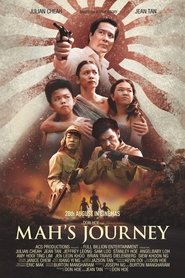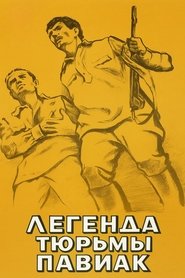Top Rated War Movies on Pantaflix - Page 379
-
Mah's Journey
2025
Mah's Journey
2025
During the World War II, a Japanese war major and his soldiers hunt down a woman and her children who are trying to escape Thailand to return home to Malaysia. -
Hess
1978
-
This Light Rains
2007
This Light Rains
2007
On the morning a soldier leaves for war, he must bring his family together or risk losing them forever. -
Sign and See the World
2025
Sign and See the World sheds light on the journey of three young Surinamese men who, far from home, travel from Suriname via Canada to Europe during World War II to join the Princess Irene Brigade. Driven by a determination to help liberate the Netherlands, the film reveals the challenges and hardships of their journey, as well as the personal motivations, courage, and sacrifice that drove them to play a crucial role in the liberation of the Netherlands and Europe - one that never made it to the history books. -
Augustus: The First Emperor
2003
Old and ill, Augustus, the man who changed the fortunes and destiny of an empire by completing Julius Caesar's project, recounts the two most important phases of his life: his rise to power and his fight against the pressure of his family. -
Colin Powell: An American Dream
1995
A biographical documentary on the life and career of U.S. Army General Colin Powell. -
WWIII
1994
WWIII
1994
To help prevent the unthinkable from ever coming true, it is important to know what could really happen....the most awesome and deadly display of warfare that the world has ever seen. -
Through All the Years
1985
Alexander Demin and Vassa Druzhinina fell in love with each other in their school years. In the thirties, due to the unjust arrest of her father, Vassa left a small Volga town. They later met, but the war kept them apart until the spring of 1945. -
The Third Day
2025
The Third Day
2025
As his son is drafted into the army, a father volunteers months later to serve in the same regiment, determined to protect him from the horrors of war — even if it means never coming home again ... -
Country-X
0000
Country-X
0000
Invaders are genociding the Asians of a mysterious country. The princess must now decide whether to run or fight. -
Those Who Saw the Truth
1930
The First World War, the Russian-Austrian front in March 1917. Hungarian soldier Janos becomes acquainted with Bolshevik ideas and helps a Russian prisoner of war escape. -
Dimitrie Cantemir
1974
Dimitrie Cantemir
1974
The film is about the life of Dmitry Cantemir and the Moldovan people from November 1710 to July 1711. Turkish troops are preparing for war with Russia. The Sultan entrusted him with the throne of Moldavia. Cantemir secretly established ties with Peter I and concluded a military-political agreement with him, according to which Russia took Moldova under its protectorate, pledged to help expel the Turks and restore the former borders of the Moldovan state. -
Legend of Pawiak Prison
1971
About the courage and resilience of two Tajik pilots who were captured by the fascists at the beginning of the war and ended up in the Pawiak political prison in Warsaw. At the first opportunity, the heroes make their escape. -
Les Déserteurs
2025
Les Déserteurs
2025
-
Leon Couturier
1927
Leon Couturier
1927
Adaptation of book by Boris Lavrenyov about the work of the underground fighters in a Ukrainian town occupied by the White army in 1919. Lost. -
A Glimpse of Heaven
0000
A Glimpse of Heaven
0000
A young soldier is caught between life and death after a tragic accident during war. As he drifts through memories of his life with his wife, Vicki-from prom to their wedding-he finds himself reflecting on love and the choices that define us.
 Netflix
Netflix
 Amazon Prime Video
Amazon Prime Video
 Apple iTunes
Apple iTunes
 Apple TV Plus
Apple TV Plus
 Disney Plus
Disney Plus
 Google Play Movies
Google Play Movies
 Paramount Plus
Paramount Plus
 Hulu
Hulu
 HBO Max
HBO Max
 YouTube
YouTube
 fuboTV
fuboTV
 Peacock
Peacock
 Peacock Premium
Peacock Premium
 Amazon Video
Amazon Video
 The Roku Channel
The Roku Channel
 AMC+
AMC+
 Kocowa
Kocowa
 Hoopla
Hoopla
 The CW
The CW
 Vudu
Vudu
 Starz
Starz
 Showtime
Showtime
 PBS
PBS
 Pantaflix
Pantaflix
 FXNow
FXNow
 Tubi TV
Tubi TV
 Kanopy
Kanopy
 Comedy Central
Comedy Central
 Crunchyroll
Crunchyroll
 Microsoft Store
Microsoft Store
 Redbox
Redbox
 Sun Nxt
Sun Nxt
 ABC
ABC
 DIRECTV
DIRECTV
 Crackle
Crackle
 Fandor
Fandor
 Plex
Plex













